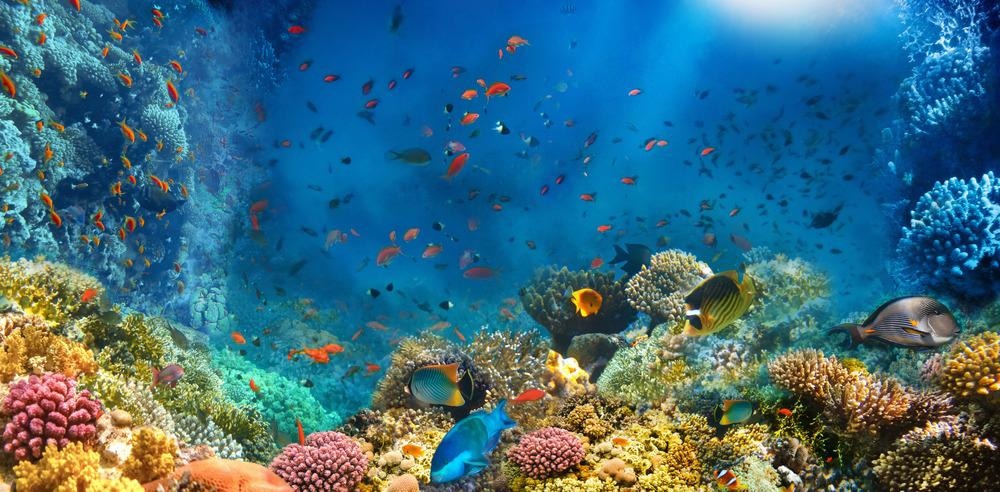The effect of zinc anions and nanoparticle (Zn NP) exposure on the mussel Mytilus galloprovincialis was written in the journal Science of The Total Environment to explore the impact of heavy metals on the marine environment.

Study: Impacts of dissolved Zn and nanoparticle forms in the fatty acid landscape of Mytilus galloprovincialis. Image Credit: Solarisys/Shutterstock.com
Metal Waste in Ocean
Metal-containing waste is frequently dumped into the ocean, posing a serious health risk to aquatic life. Trace metals, which are deposited in the air by aerosols such as dust and other particulates, have a significant effect on ocean biota, impacting biological productivity and altering the coastal ecosystems.
Trace metal elements can start causing different levels of toxicity in marine biota, depending on their physicochemical characteristics. Once inside a species, metals can cause a slew of problems, often by triggering an overage of reactive oxygen species (ROS) through Fenton-type reactions. This can damage the lipids, proteins, and DNA of the organism.
Evidence of Toxicity
An overwhelming amount of ecotoxicological studies look at the deposition of pollutants inside a lifeform because metals can easily bind to the surface of the cells or enter cells through endocytosis.
Pollutants have also been shown to instigate changes in lipid respiration and fatty acid profiles, including changes in the percentage of saturated vs. unsaturated fatty acids, and even some LC-PUFA material.
Lipid peroxidation occurs when metal-generated ROS interact with PUFAs, causing oxidative stress to these particles and the production of malondialdehyde (MDA), the most common lipid peroxidation component.
Changes in the synthesis and mobilization of phospholipids and triglycerides and membrane spontaneity are all considered viable evidence of toxicity.
Zinc Concentration in Water and the Effect on Human
Because of its widespread usages, commercial importance, and inherent characteristics, zinc has been identified by the OECD as being one of the main metallic materials introduced anthropogenically.
Zinc nanoparticles can be found in cosmetics, livestock feed, and fertilizers and are frequently used in sunscreens because they can block UV light, safeguarding skin cells. Because of the widespread and ever-increasing production and the use of zinc, several researchers decided to measure it in aquatic media.
They estimated that zinc alone would contribute 170–2,985 tons per year to receiving waters of all types. Zinc NP concentrations in European surface waters are expected to be around 1 mg/L by 2020.
Result Shows Different Effects on Mussel
The team discovered that the percentages of nano-zinc and ionic zinc uptake were vastly different, with nano-zinc accumulating at a much higher rate.
The findings revealed that zinc has clear adverse effects on the mussel Mytilus galloprovincialis, both in anion and nanoparticulate configurations. These effects are proportional to irradiation time and concentration.
The concentration levels tested in this study are mathematically possible to achieve in nature, at least in certain locations closer to domestic sewage disposal. As a result, the toxic effects produced are concerning, as there is a high risk of negative consequences in marine biota chains and, inevitably, human health.
This is particularly important considering how well the fisheries industries are increasingly looking for multiple protein sources in recent years.
The Negative Effect of Mussels Exposed to Ionic zinc and the Advantage of Detection
To summarize, the more toxic effects correlate with increased concentration of a metallic stressor, and prolonged exposure worsens biological effects. Furthermore, the negative effects observed in mussels subjected to both the ionic zinc form and its nanomaterials counterpart emphasize the importance of toxicity tests that look at different aspects of metals.
Metal atoms are increasingly introduced into water habitats. The negative impacts they may have on biota, such as lipid peroxidation and fatty acid profile modifications, can affect microbes at higher trophic, ultimately affecting human health.
Future Research
A canonical assessment of the fatty acid profiles' primary coordinates revealed a strong distinction between the specimens treated with various doses of ionic and nano-zinc, indicating a high potential for its usage as a set of zinc exposure indicators. Given the existing challenges in determining pollution by micro metal forms, this discovery offers up new possibilities for future environmental monitoring.
Continue reading: Why Nanotoxicology Should be the First Step Towards a Nanotechnology Future.
Reference
Roma, J., et al. (2021). Impacts of dissolved Zn and nanoparticle forms in the fatty acid landscape of Mytilus galloprovincialis. Available at: https://doi.org/10.1016/j.scitotenv.2021.152807
Disclaimer: The views expressed here are those of the author expressed in their private capacity and do not necessarily represent the views of AZoM.com Limited T/A AZoNetwork the owner and operator of this website. This disclaimer forms part of the Terms and conditions of use of this website.